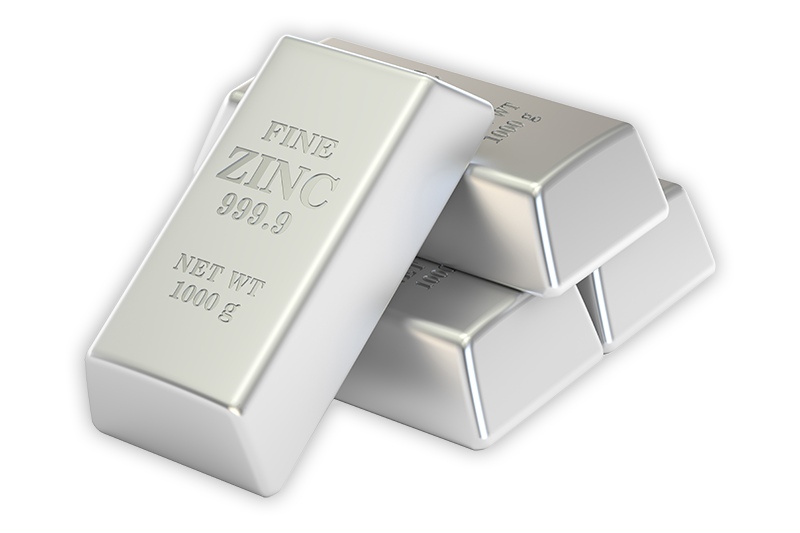
noun
- Chemistry. a ductile, bluish-white metallic element: used in making galvanized iron, brass, and other alloys, and as an element in voltaic cells. Symbol: Zn; atomic weight: 65.37; atomic number: 30; specific gravity: 7.14 at 20°C.
- a piece of this metal used as an element in a voltaic cell.
verb (used with object), zincked or zinced [zingkt] /zɪŋkt/, zinck·ing or zinc·ing [zing-king] /ˈzɪŋ kɪŋ/.
- to coat or cover with zinc.
noun
- a brittle bluish-white metallic element that becomes coated with a corrosion-resistant layer in moist air and occurs chiefly in sphalerite and smithsonite. It is a constituent of several alloys, esp brass and nickel-silver, and is used in die-casting, galvanizing metals, and in battery electrodes. Symbol: Zn; atomic no: 30; atomic wt: 65.39; valency: 2; relative density: 7.133; melting pt: 419.58°C; boiling pt: 907°C
- informal corrugated galvanized iron
1650s, from German Zink, perhaps related to Zinke “prong, point;” said to have been used first by Paracelsus (c.1526) on analogy of the form of its crystals after smelting. Zinke is from Old High German zint “a point, jag,” from Proto-Germanic *tindja “tine” (cf. Old Norse tindr “point, top, summit,” Old English tind “prong, spike;” cf. tine).
n. Symbol Zn
- A metallic element that is brittle at room temperature but becomes malleable when heated and is used in various pharmaceuticals, including astringents and antiseptics. Atomic number 30.
Zn
- A shiny, bluish-white metallic element that is brittle at room temperature but is malleable when heated. It is used in alloys such as brass and bronze, as a coating for iron and steel, and in various household objects. Zinc is essential to human and animal growth. Atomic number 30; atomic weight 65.39; melting point 419.4°C; boiling point 907°C; specific gravity 7.133 (25°C); valence 2. See Periodic Table.
 Liberal Dictionary English Dictionary
Liberal Dictionary English Dictionary